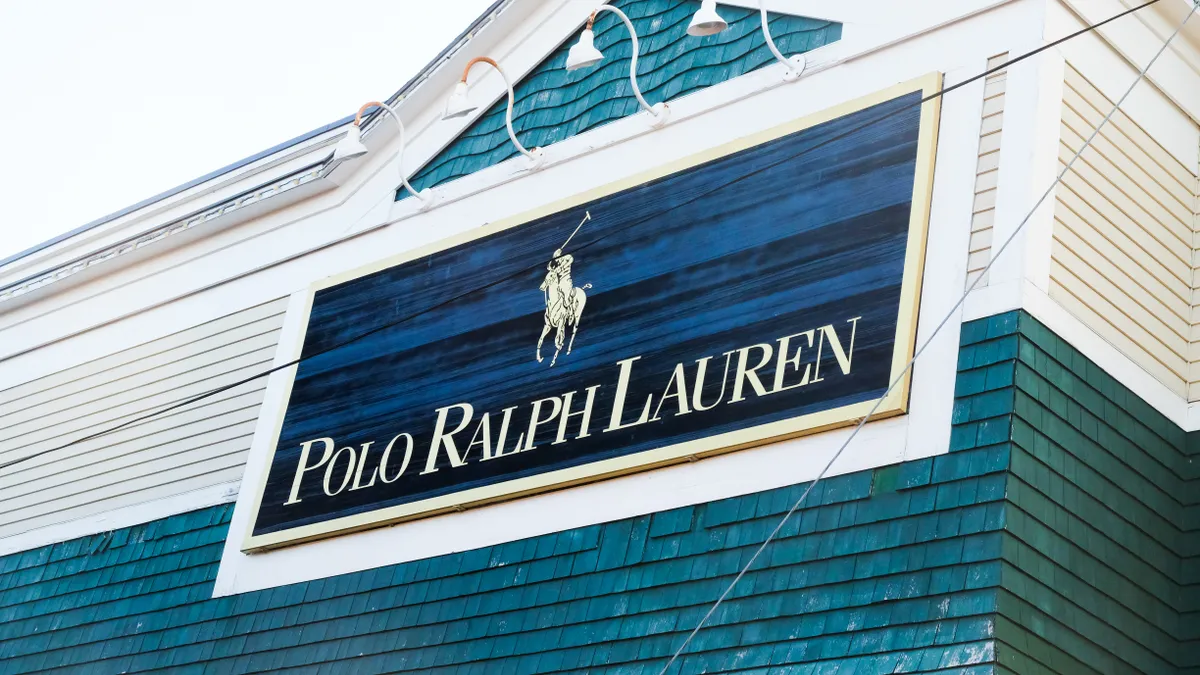Dive Brief:
-
Ralph Lauren on Tuesday said that Q2 2022 net revenue rose 26% year over year to $1.5 billion, although that was down 11.8% from 2019. Growth was especially strong in Europe and North America, according to a company press release. Growth was also strong in wholesale, which rose 31.4% year over year to $569 million, but fell from $688.8 million in 2019.
-
The company is also bolstering its own direct sales, on pace to open 90 new stores this year, executives said during a Tuesday conference call. Its direct e-commerce grew 35%.
-
Gross profit margin reached 67.5%, up from 67% a year ago and 61.5% in 2019. Net income in the quarter reached $193 million, up from a net loss of $39.1 million a year ago and a profit of $182 million in 2019.
Dive Insight:
Ralph Lauren has embarked on a variety of turnaround strategies, which have had to be tweaked due to the COVID-19 pandemic, ongoing supply chain issues and new imperatives driven by e-commerce growth.
The company joins a host of other brands in its effort to boost its own sales to consumers through its stores and website. Its Q2 direct-to-consumer average unit retail, or average selling price, grew 14% year over year, with operating margin in its own digital business on par with last year and more than 1,300 basis points higher than two years ago, per its release.
GlobalData Managing Director Neil Saunders sees Ralph Lauren as "very reliant" on third-party retailers compared to other upscale brands. "This forces it into a position where it needs concessions in retailers like Macy’s to generate revenue," he said. "Unfortunately, these locations do nothing to enhance the Ralph Lauren brand as they are invariably down-at heel and, in some cases, downright shabby."
Yet recent research from BMO Capital Markets Managing Director Simeon Siegel shows that forgoing wholesale can mean sacrificing margins. While tension between wholesale and direct may be stark at Ralph Lauren, it's not unique to it.
"There's no such thing as a bad channel," Siegel said by phone. "There are good and bad strategies. And there's a full ecosystem to keep in mind."
The move to sell more to customers, along with other initiatives like this year's sale of Club Monaco to private equity, dinged sales in the quarter, though that doesn't fully explain Ralph Lauren's weaknesses compared to 2019, according to GlobalData's Saunders.
"[T]he disposal of Club Monaco and the deliberate pull back from wholesale and off-price channels has eroded revenue, but even when these are considered, Ralph Lauren is still underperforming the market on a two-year basis," Saunders said in emailed comments. "In our view, this is because of ongoing issues with the brand and weaker distribution model than many other luxury players."
Those issues include a diffuse range at various price points, which confuses shoppers, he said. "The shame of all this is that Ralph Lauren could be a much stronger brand," he said. "It has a very solid heritage, is headed by a fashion icon, and still has some elements that are both glamorous and relevant."
Ralph Lauren CEO Patrice Louvet seems to agree, at least on some level. "To a large extent our brand continues to be much bigger than our business," he said Tuesday. "So our performance so far has given us proofpoints and the confidence to continue investing in the multiple opportunities for growth that we have ahead of us."













